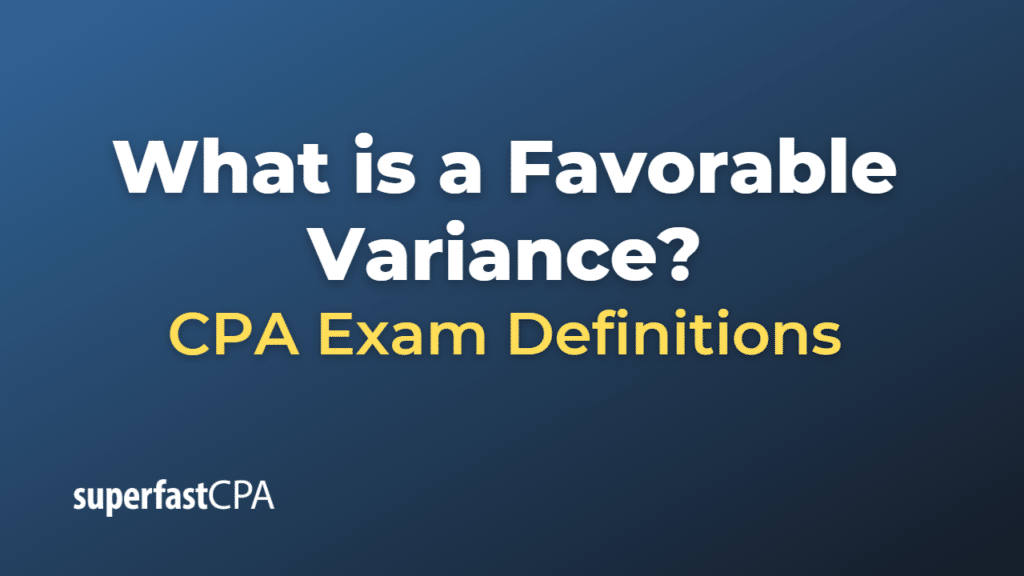Favorable Variance
A favorable variance occurs when the actual result of a financial operation is better than the budgeted or forecasted result. It’s called “favorable” because it positively impacts profit.
Favorable variances can occur in relation to both revenues and costs:
- Favorable Revenue Variance: This happens when actual revenue exceeds forecasted revenue. This could be due to factors like higher-than-expected sales volume or higher selling prices.
- Favorable Cost Variance: This occurs when actual costs are less than budgeted costs. This might be due to more efficient operations, lower raw material costs, or less wastage than anticipated.
While a favorable variance is usually a positive sign, it’s important for businesses to understand the reasons behind the variance to ensure sustainable performance. For example, if a favorable cost variance was due to underspending on essential maintenance or quality control, it could lead to issues down the line. Conversely, if a favorable revenue variance was due to a one-off event, it may not be indicative of future performance.
It’s also worth noting the counterpart to a favorable variance, which is an unfavorable (or adverse) variance. This occurs when the actual result is worse than the budgeted result, such as when costs are higher than expected or revenue is lower than expected.
Example of a Favorable Variance
Imagine a company – let’s call it ABC Manufacturing – has budgeted for the cost of raw materials to be $100,000 for the upcoming quarter. However, due to efficient negotiation with suppliers and a decrease in market prices, they manage to purchase the necessary raw materials for only $90,000.
In this case, ABC Manufacturing would have a favorable cost variance of $10,000 ($100,000 budgeted cost – $90,000 actual cost) for the quarter. This variance is favorable because the actual cost is less than what was budgeted, which could potentially lead to higher profits for the quarter, assuming all other factors remain constant.
Similarly, if ABC Manufacturing had forecasted sales revenue of $200,000 for the quarter but ended up achieving $220,000, they would have a favorable revenue variance of $20,000 ($220,000 actual revenue – $200,000 forecasted revenue).
In both these scenarios, the favorable variances would contribute positively to the company’s profit margin. However, the management of ABC Manufacturing would also need to understand the specific reasons for these variances to determine whether they are sustainable or if they were caused by one-off events.












